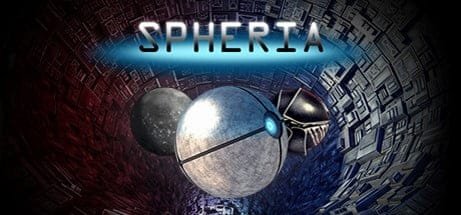 Marble-rolling games occupy a special niche in the arcade game genre. Players typically take the role of a tiny ball, rolling and careening its way around obstacles and pitfalls on the way to an exit point The game we have for you today is slightly different. It’s called Spheria; developed by Daydream Software and published by Black Shell Media.
Marble-rolling games occupy a special niche in the arcade game genre. Players typically take the role of a tiny ball, rolling and careening its way around obstacles and pitfalls on the way to an exit point The game we have for you today is slightly different. It’s called Spheria; developed by Daydream Software and published by Black Shell Media.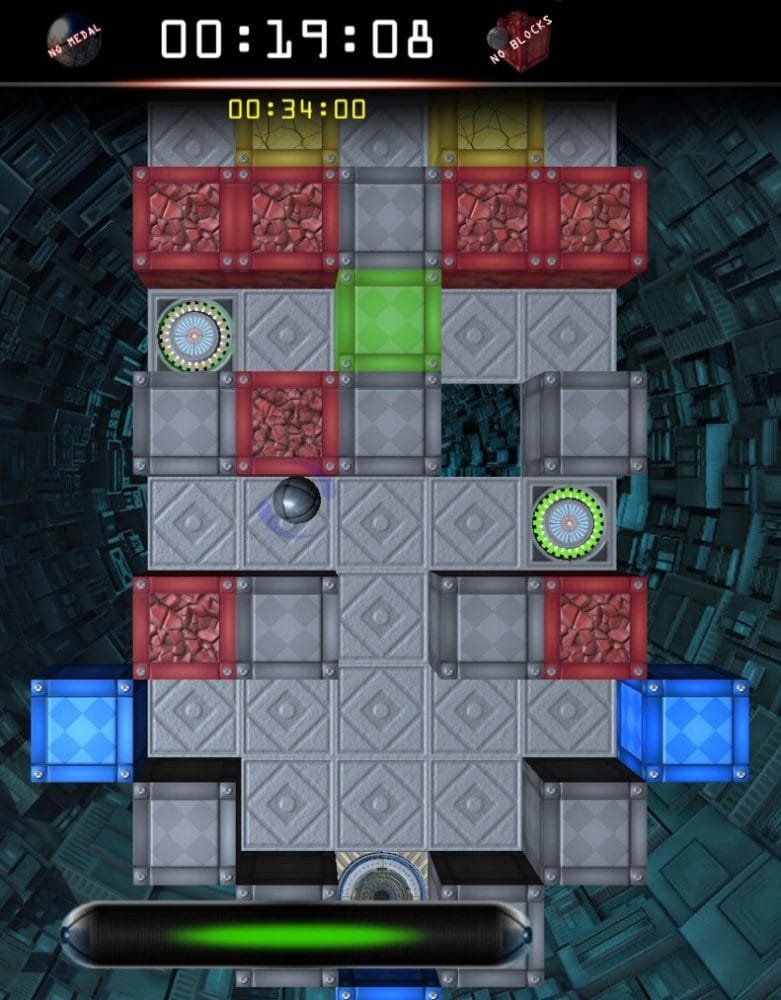 In Spheria, the “marble” is actually a large, heavy medicine ball. Using either keyboard or mouse, the idea is to navigate compact, yet tricky tabletop maps. Positioned precariously on each map is a series of checkpoints. You must roll the ball over each in order to unlock the exit. Now here’s where it gets interesting. The checkpoints don’t instantly light up the moment you encounter them. You must stop and linger for a second as they power themselves up. This is not as easy as it sounds, for the surrounding blocks and maze walls will do whatever they can to stop you!
In Spheria, the “marble” is actually a large, heavy medicine ball. Using either keyboard or mouse, the idea is to navigate compact, yet tricky tabletop maps. Positioned precariously on each map is a series of checkpoints. You must roll the ball over each in order to unlock the exit. Now here’s where it gets interesting. The checkpoints don’t instantly light up the moment you encounter them. You must stop and linger for a second as they power themselves up. This is not as easy as it sounds, for the surrounding blocks and maze walls will do whatever they can to stop you!
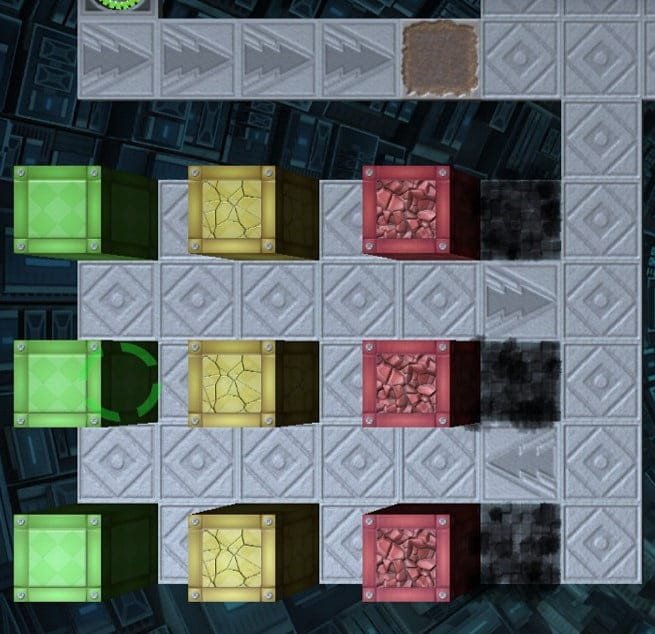
The first obstacle you’ll encounter is the basic building blocks. Green blocks turn yellow when you bump into them. Yellow blocks turn red, and red blocks simply disappear when struck, leaving a gaping hole in the floor. As with most marble games, you don’t want to fall off the map if you can help it. Another type of obstacle is the blue block.
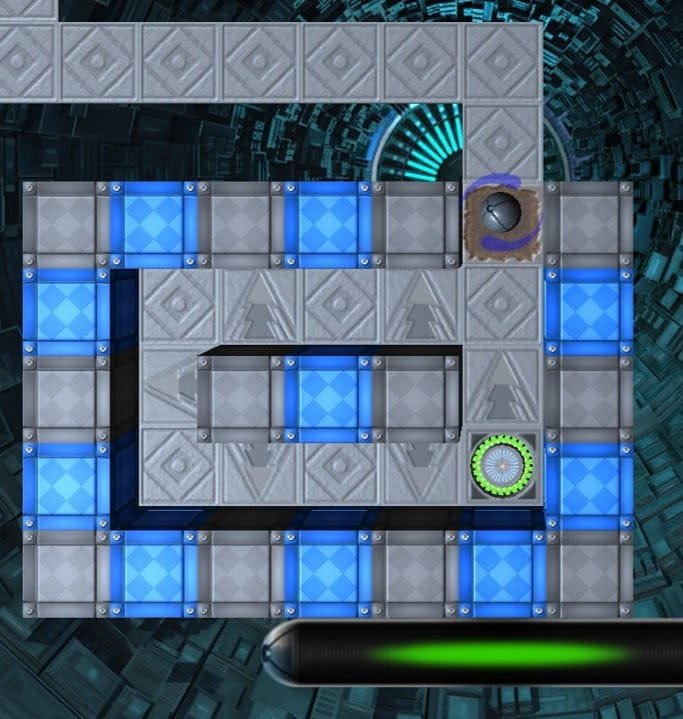
As in another famous puzzle game, blue is the color of repulsion; it will bounce your ball away upon contact. Unfortunately, you can’t simply avoid these blocks. Some checkpoints are nestled within groups of these bouncy nemeses!
Next, let’s examine the flooring. Most tiles are a plain gray (safe) color. However, there are others to watch out for. Muddy tiles will slow you down. Icy tiles are slippery and will alter your direction of movement. Arrow tiles only allow passage in the direction they point. One of my favorite sequences involves reaching a checkpoint guarded by blue blocks and arrow tiles! By far the trickiest mechanic I’ve come across is the dissolving floor. Green tiles are safe, but only for a short time. They quickly turn red, warning you of their impending disappearance. If you’re on a tile when it vanishes, you’ll be dropped off the map into oblivion. So you can see how levels that combine all of the aforementioned elements may get frustrating, but at the same time very rewarding when solved. Is there anything the player can do to acclimate to the game’s demanding skill? Indeed there is; it’s called the tutorial! These entry-level maps do a great job teaching you about the physics of the game and the accompanying boundaries.
So overall, is Spheria worth it? Priced on Steam at $4 (USD), the answer is yes. Despite the game’s inherent trickiness (so prevalent in arcade titles), Spheria‘s addictive nature will keep you returning for more. Add in its 22 Steam achievements and you have a fun, beer-and-pretzels arcade leveler with lots of replay value!
-Chris Roberts-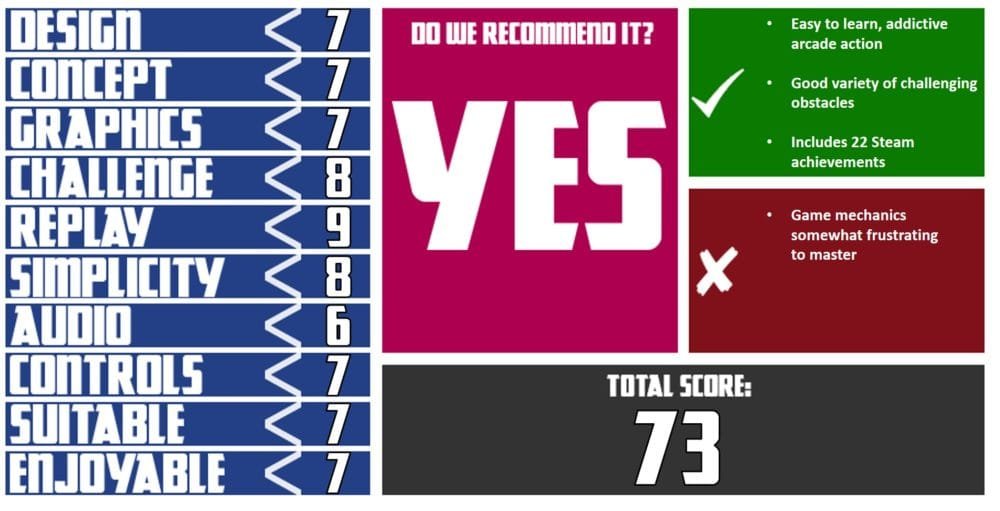
I’m an autistic gamer with ADHD, studying Business Administration at the University of the People while learning game development. For over 10 years, I’ve reviewed games, collaborated on projects at global game jams, and attended industry conferences. I love growing with others through our shared passion. Always learning, always pushing forward — sometimes you just have to do something crazy.
